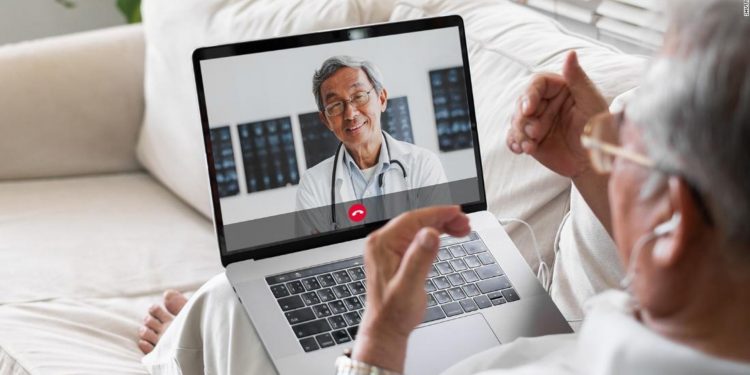With almost half of the population estimated to hit 65 years or older by 2050, Singapore is facing a drastic demographic shift that will have far-reaching impacts on the country’s healthcare needs. This can be extrapolated from a 2020 census revealing that nearly 70,000 seniors are currently unfit to perform basic activities without some level of assistance, including self-care.
In light of the rapidly ageing population and the spike in single-person households, the demand for long-term care (LTC) is anticipated to rise in the coming decades. With many seniors having expressed the wish to “age in place” within their own homes rather than at assisted living facilities, governmental and social service sectors have pivoted a greater focus to supporting family caregivers in meeting the holistic needs of our silver population.
The pandemic’s silver lining: The rise of telehealth
But when the Covid-19 pandemic hit, the ensuing two-year crisis imposed a strain on Singapore’s long-term care (LTC) system, which provides predominantly physical, high-touch services and support for those unable to care for themselves. These services include community-based LTC — which can be home- or centre-based — and residential LTC, which is provided at assisted living facilities and nursing homes.
A case study by Oliver Wyman brought to light how the pandemic has forced many such care centres to halt their services, thereby impeding the residents’ physical and mental health routines and providing additional responsibilities for primary caregivers at home. Operators that hastened to migrate their activities online saw varying levels of success, and were often hampered by the seniors’ digital estrangement.
However, their change to telemedicine services and the rising popularity of homecare — combined with the “new normal” of social distancing — signalled a big step towards the reinvention of virtual and hybrid care methods. This sweeping transition would revolve around “digital-led care models that are integrated closely with offline models”, including telehealth and virtual day care, focused on providing the best quality of life for seniors as ageing-in-place becomes the new default.
Frequently used interchangeably with the term “telemedicine”, telehealth broadly covers the components of healthcare that are delivered over telecommunications infrastructure.
Telehealth services include clinical teleconsultation, where doctors, nurses, therapists, and even dieticians assess, diagnose, or treat patients through a screen; telemonitoring, where the health of patients is monitored remotely; as well as mobile health applications. With technology transforming nearly every aspect of our everyday lives, it is unsurprising that this is being leveraged with the goal of enhancing our healthcare system: Telehealth provides affordability and wider access to healthcare, while offering convenience and sustainability.
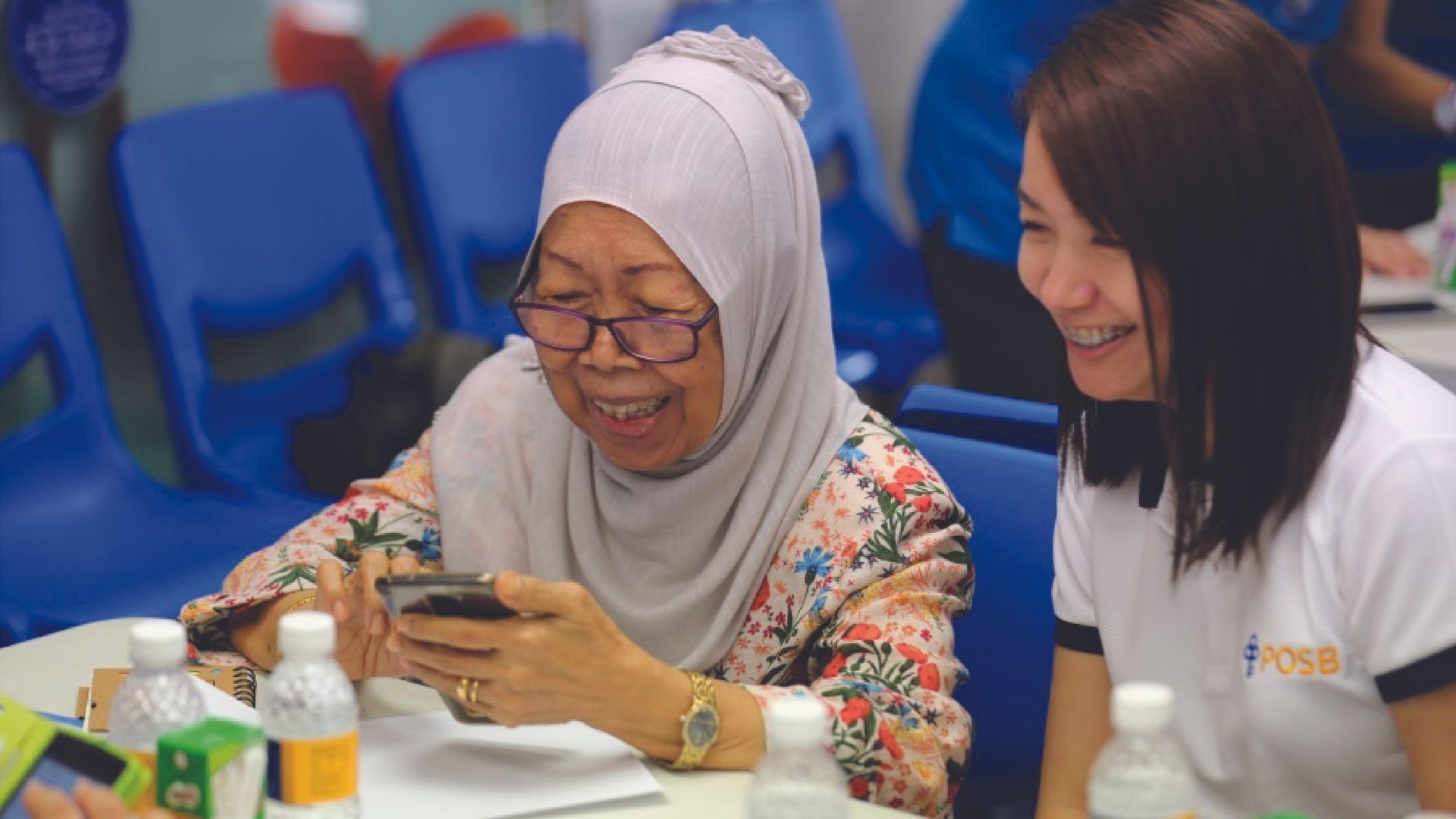
“However, the inherent lack of trust in technology among the elderly makes them reluctant to adopt this novel mode of teleconsultation,” says Dr Preetha Menon, Associate Consultant in the Geriatric Medicine Department of the Alexandra Hospital. The hospital is one of the first in Singapore to have quickly adapted to conducting teleconsultations when Covid-19 was at its peak in April 2020.
Its aim is to have more than half of eligible consultations carried out remotely, even after the pandemic. “A lot of older adult patients do not feel like they’ve actually consulted a doctor at the end of the session. They also often have varying degrees of sensory impairment, such as poor vision or hearing, which makes the involvement of a caregiver necessary,” Dr Menon says.
One such elderly patient is Madam Jane Hung, 86, who is not used to having her annual medical check-up conducted through the computer. Madam Hung, who is also hard of hearing, tells TheHomeGround Asia that she is sometimes unable to discern what the doctor is saying and usually loses interest after 10 minutes into the consultation.
“My children work and would often not have time to be at the consultation. It’s just me and the maid who doesn’t speak English well. I feel that it is a waste of time,” she says in Cantonese.
Although the steps of arranging a teleconsultation have been highly simplified to ensure easy user access and simple interface navigation, Dr Menon observes that carrying out a demonstration beforehand to show how simple the process can be would often help assuage fears and concerns the elderly might have.
“Apart from promoting digital literacy among seniors, providing anecdotal experiences from other elderly patients might boost their own confidence in handling new technology,” she adds.
It may not be possible to carry out routine physical check-ups like for blood pressure or heart rate during teleconsultations, but telemedicine still comes equipped with many advantages.
“The ability to assess patients in their homes allows for effective safe distancing and infection control measures, and being in a familiar environment makes the entire process less anxiety-inducing for them. Of course, cutting down on hospital trips also reduces cost and waiting time,” Dr Menon says.
Fear of the unknown results in many elderly rejecting telemedicine
A 2020 study by the Singapore Eye Research Institute (SERI) found low acceptance of digital health services among the older generation. The survey, carried out during the circuit breaker period of 2020, revealed that more than half of the 520 people aged 60 and above surveyed were unlikely to use digital medical services if the pandemic continued on its trajectory. Although half the respondents agreed that telemedicine would be helpful in reducing non-essential contact in clinics and hospitals, more than 7 in 10 of them expressed apprehension towards the idea of Artificial Intelligence (AI) interpreting their medical results.
But as the study was conducted during the circuit breaker when telemedicine services became common, it also found that seniors of higher income and education levels were more likely to use digital health services.
These findings highlight the need to improve digital health acceptance and adoption among the elderly as healthcare moves towards the new normal of safe-distancing. Professor Cheng Ching-Yu, co-principal investigator of the study who heads the Ocular Epidemiology Research Group and Data Science Unit at SERI, affirmed that more needs to be done to allay the fears and scepticism revolving around digital health services for elderly patients who have never tried them before.
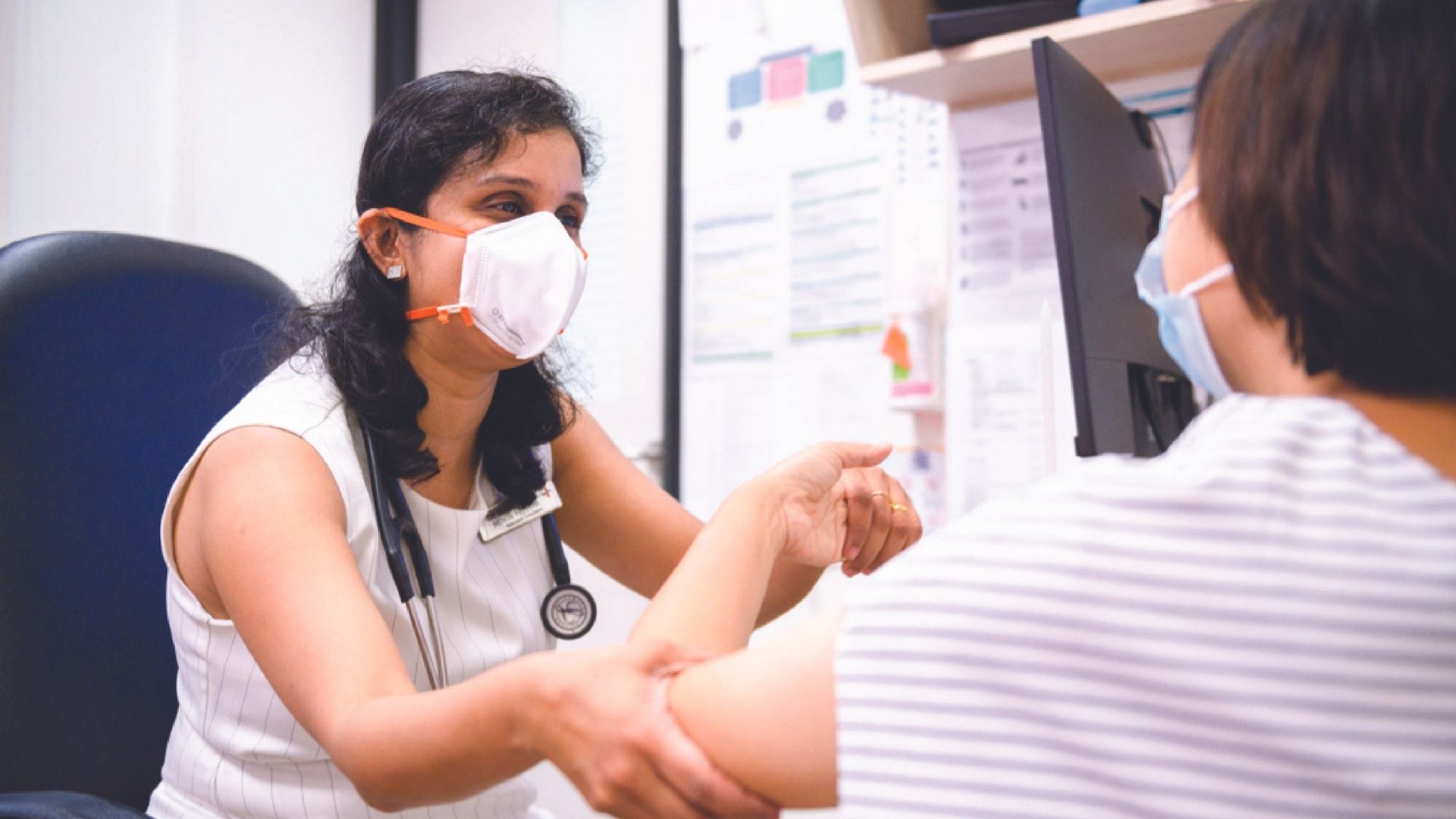
Technology for social innovation
Despite mixed responses from the elderly, there has been a rise in telehealth services like Homage, which is a mobile application that links seniors with high quality healthcare on demand. Utilising the same asset-light models of cab booking apps for smartphones like Grab, users can book services ranging from nursing care and daily living assistance to home therapy and consultation. It also allows the matching of Care Owners (care recipients or seniors) or Care Managers (family members of care recipients) with Care Professionals (Homage’s trained caregivers).
Another example is Jaga-Me, also aimed at harnessing technology to plug the gaps in caregiving at home. Founded in 2015, the fundamental idea of Jaga-Me is to transform the traditional model of healthcare, which is designed to “deliver” patients to “where the care is”, to a healthcare system that is decentralised, and can deliver care to where the patient chooses.
Co-founder Julian Koo told The Business Times in 2018 that its technology “has helped reduce the waiting time for home healthcare services by ten-fold, and we’ve served over a thousand patients through our platform”.
“Not only does the Jaga-Me platform perform the role of matching supply and demand, it also serves as a health data cloud so that a patient can be cared for seamlessly throughout their journey. This means that reports can be viewed and shared among members of a care team, allowing them to remotely manage a patient’s needs, both online and offline,” he said.
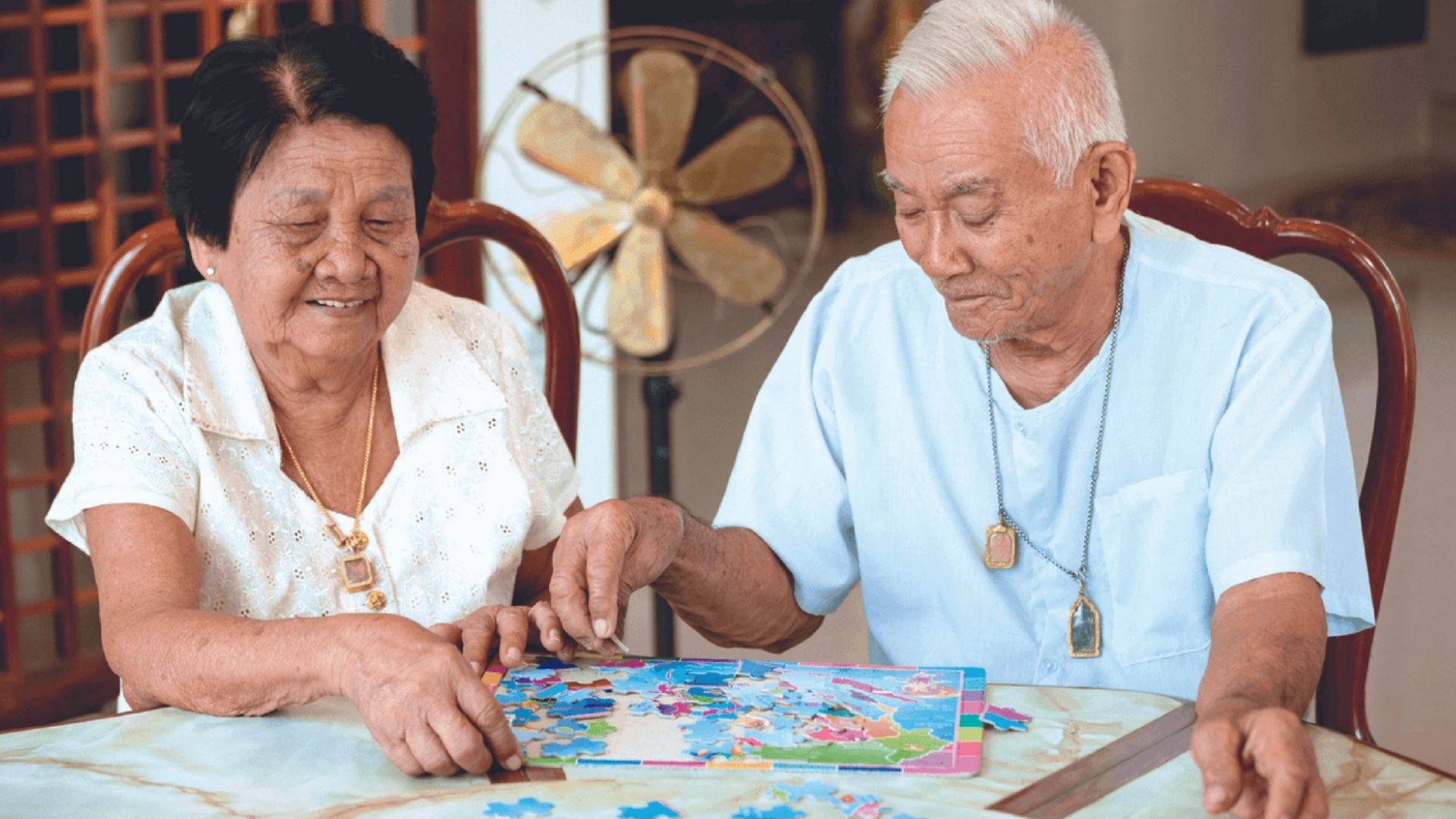
Bridging the gaps of caregiving at home
With the median age of Singaporeans projected to scale from 40 years in 2015, to 47 years in 2030 and 52.8 years in 2050, the dependency ratio is projected to drop to nearly 1:1, where each adult would be supporting a child or an elderly person.
To illustrate this, there were 100 adults — aged 20 to 64 years — in 2015 supporting around 50 children and seniors; however, by 2050, it is expected that 100 adults would be supporting up to 95 children and seniors.
Depending on the individual circumstances of the care recipient, caregivers are tasked with a range of taxing care responsibilities that most of their life ends up revolving around. Having to place their family member’s needs above their own — coupled with the demanding expectations placed upon their shoulders — caregivers are left with little time to engage in self-care, like attending their own doctor’s appointments or participating in social activities. For example, a study by the Institute of Mental Health and the National University of Singapore found that 40.2 per cent of carers of stroke survivors exhibit depressive symptoms.
Telehealth interventions might provide relief in meeting the informational, psychosocial, and healthcare needs of family caregivers. By delivering access to interventions in convenient locations, these remote modalities reduce the cost of transportation and respite care. Employed carers can also receive needed services during off-hours, thus minimising work disruptions and potential loss of wages.
The future of healthcare
Telemedicine is not just limited to video consultations with doctors, phone calls, chatbots and AI. Physiotherapy, rehabilitation, and even audiology services are now being done over Zoom.
For instance, Ng Teng Fong General Hospital’s (NTFGH) audiology department offers tele-audiology services, which include connecting to a patient via video call, and linking up to their hearing device so that the audiologist can adjust the patient’s hearing aid remotely.
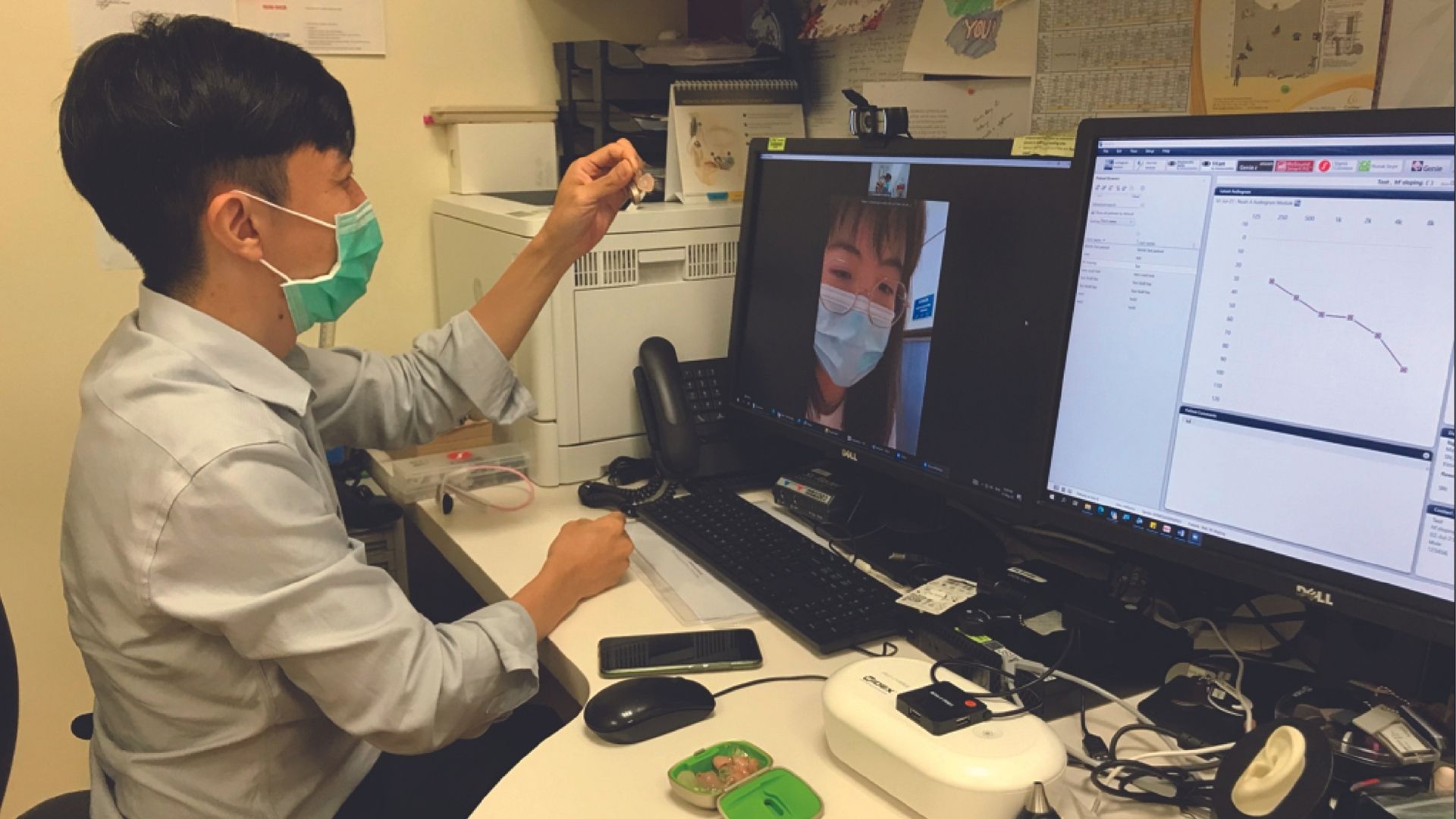
The elderly’s unfamiliarity with technology also proves to be the main challenge in the employment of tele-audiology. “Tele-audiology is slightly more demanding than conventional tele-consultation due to the inherent technical and logistical capabilities required, such as maintaining a stable and robust data and Bluetooth connection to the patient’s hearing aids via their mobile phones,” says Senior Audiologist Remy New Shi You of the Audiology Department at NTFGH.
The hospital has pioneered a few initiatives to enhance the accessibility of tele-audiology for patients, which include setting aside time during face-to-face consultations to teach and familiarise patients with the use of relevant applications, and encouraging the involvement of younger caregivers to help set up them up and participate in the tele-audiology sessions. This also has the added benefit of educating the family members about the patient’s hearing health.
“Standardising telemedicine touchpoints and interfaces across healthcare institutions would help lower the barriers of entry to telemedicine,” says Mr New. “A good example is the OneNUHS App which allows patients to reschedule telemedicine appointments they have at any of the National University Health System’s (NUHS) institutions. This is enabled by automated authentication, using SingPass. A leaner, consolidated number of systems will build familiarity and confidence amongst the elderly in telemedicine.”
Despite the push to advance caregiving and manage medical care through technology, telehealth still has its limitations. Even though doctors follow the same standard of care and code of ethics during teleconsultation sessions, the lack of the “human touch” might be problematic in some cases, especially when dealing with serious illness conversations. As iterated by Dr. Menon, some patients also feel sceptical towards online diagnosis, with in-person hospital visits ensuring peace of mind. While data protection and privacy might be an issue for concern to some, the digital divide also means that the less privileged who would benefit most from telehealth are also the least likely to receive it. In addition, certain acute illnesses are unfortunately ill-suited for telehealth.
Therefore, it seems unlikely that Singapore is headed towards a fully digitised healthcare system; rather, we are building an integrated care ecosystem that would also relieve the mounting stress faced by caregivers in our community. With that, telehealth still holds the promise of empowering senior citizens to live well and age-in-place gracefully throughout their silver years.
RELATED: Caregiver burnout: Taking a toll on health, relationship and state of mind
Join the conversations on TheHomeGround Asia’s Facebook and Instagram, and get the latest updates via Telegram.



